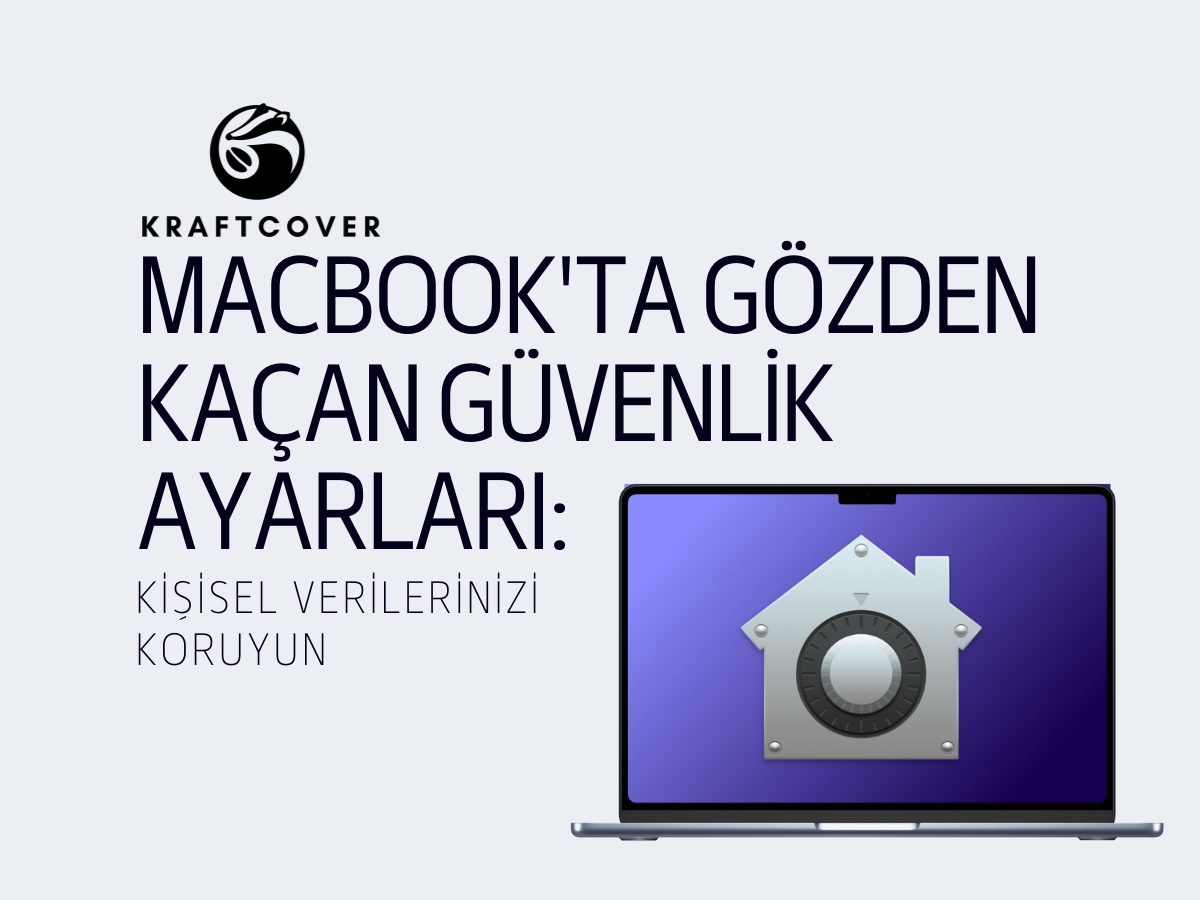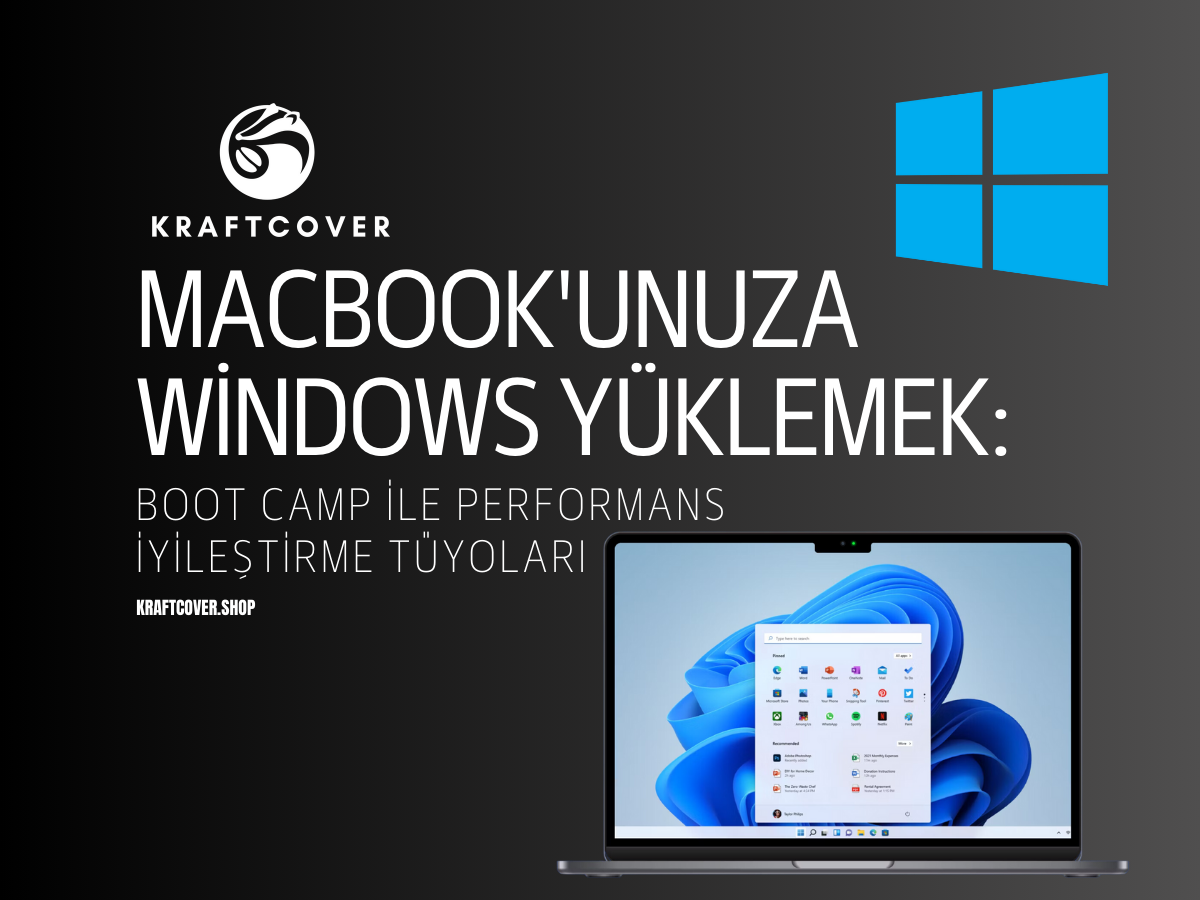MacBook kullanıcıları olarak cihazlarımızın güvenlik önlemlerine genellikle güveniriz. Apple’ın sunduğu güvenlik sistemleri, dünya genelinde güvenilirliği ile bilinir. Ancak pek çok kullanıcı, cihazlarındaki bazı kritik güvenlik ayarlarını gözden kaçırabiliyor.
Bu yazıda, MacBook'unuzun güvenliğini bir üst seviyeye taşıyacak, gözden kaçan güvenlik ayarlarına ve verilerinizi korumanın yollarına odaklanacağız. Hazırsanız, kişisel güvenliğinizi artıracak bu adımları birlikte keşfedelim!
1. İki Faktörlü Kimlik Doğrulama (2FA): Hesaplarınızı Ekstra Güvenlik ile Koruyun

Apple Kimliğiniz, MacBook'unuzda oturum açarken kullanılan ana hesaptır. Eğer bu hesaba izinsiz giriş yapılırsa, tüm kişisel verilerinize erişim sağlanabilir. Bu yüzden, İki Faktörlü Kimlik Doğrulama (2FA) kullanmak, güvenlik açısından olmazsa olmazdır. 2FA, şifrenizin yanı sıra başka bir doğrulama faktörü (örneğin cep telefonunuza gelen bir kod) gerektirir, bu da hesaplarınızın sadece şifre ile korunmasından çok daha güvenli bir yöntemdir.
Nasıl Etkinleştirilir?
- Sistem Ayarları > Apple Kimliği > Şifre ve Güvenlik > İki Faktörlü Kimlik Doğrulama’yı Etkinleştir seçeneğine gidin ve talimatları izleyin. Bu özellik, Apple Kimliğinizi güvende tutmanın en etkili yollarından biridir.
2. Güçlü Ekran Kilidi Şifresi: İlk Savunma Hattınız
Cihazınızın kilidini açarken kullandığınız şifre, fiziksel olarak MacBook’unuza erişimi sınırlayan en önemli güvenlik katmanıdır. Basit ve tahmin edilebilir şifreler kullanmak, kötü niyetli kişilere kapıyı açabilir. O yüzden, şifrenizin güçlü olması büyük önem taşır. Güçlü bir şifre en az 8 karakter, büyük ve küçük harfler, sayılar ve özel karakterler içermelidir. Ayrıca, sık sık şifre değişikliği yapmak da önemli bir güvenlik adımıdır.
Nasıl Değiştirilir?
- Sistem Ayarları > Güvenlik ve Gizlilik > Genel > Şifreyi Değiştir seçeneğinden yeni bir şifre belirleyebilirsiniz.
3. FileVault ile Tüm Verilerinizi Şifreleyin: Disk Güvenliği
FileVault, MacBook'unuzda bulunan tüm verilerin şifrelenmesini sağlar. Bu özellik sayesinde, MacBook’unuz çalınsa bile diskinizdeki verilere izinsiz erişim mümkün olmaz. FileVault, verilerinizi etkili bir şekilde korur ve bilgisayarın açılması için şifre gerektirir.
FileVault Nasıl Aktifleştirilir?
- Sistem Ayarları > Güvenlik ve Gizlilik > FileVault sekmesine gidin ve FileVault’u Etkinleştir butonuna tıklayın. Bu işlemi başlatırken, şifrelerinizi güvenli bir şekilde sakladığınızdan emin olun, çünkü şifrenizi kaybederseniz diskinize erişim sağlamak imkansız hale gelebilir.
BagMe Laptop Taşıma Çantası ile MacBook’unuzu koruma altına alın!
4. Gatekeeper ve Uygulama Güvenliği: Kötü Amaçlı Yazılımlara Karşı Koruma

Gatekeeper, Apple’ın uygulama güvenlik denetim sistemidir ve MacBook’unuza sadece güvenilir geliştiricilerden indirilen uygulamaların yüklenmesini sağlar. Gatekeeper, kötü amaçlı yazılımların sisteme zarar vermesini engeller. Bu özellik varsayılan olarak açıktır, ancak kontrol etmek her zaman iyidir.
Gatekeeper’ı Nasıl Kontrol Edebilirsiniz?
- Sistem Ayarları > Güvenlik ve Gizlilik > Genel sekmesinde, App Store ve Tanımlanan Geliştiriciler seçeneğini işaretleyin. Bu sayede sadece güvenilir uygulamaların sisteminize yüklenmesini sağlayabilirsiniz.
5. XProtect ve Malware Removal Tool: MacBook’unuzda Gizli Güvenlik Katmanları
MacBook’unuzda yerleşik olarak gelen XProtect ve Malware Removal Tool isimli güvenlik araçları, arka planda çalışarak sisteminize bulaşabilecek kötü amaçlı yazılımları engeller. XProtect, sürekli olarak güncellenir ve Apple tarafından tanınan zararlı yazılım türlerine karşı cihazınızı korur. Malware Removal Tool ise tespit edilen zararlı yazılımları temizler.
Bu güvenlik katmanlarını güncel tutmak için, Sistem Güncellemelerini Otomatik hale getirmeyi unutmayın. Bunu yapmak için:
- Sistem Ayarları > Yazılım Güncellemeleri > Otomatik Güncellemeyi Etkinleştir
Kahve Lekesine Dayanıklı MacBook Kılıfları: Gerçekten Gerekli mi? içeriğimizi incelediniz mi?
6. iCloud ve "Bul" Özelliği: MacBook’unuzu Kaybetmeyin!
MacBook’unuzu bulmanın ve verilerinizi güvence altına almanın en iyi yollarından biri iCloud’un Bul özelliğidir. Bu özellik, MacBook’unuzu kaybettiğinizde yerini tespit etmenizi sağlar. Ayrıca, cihazınızı uzaktan kilitleyebilir ya da içindeki tüm verileri silebilirsiniz.
Bu özelliği aktifleştirmek için:
- Sistem Ayarları > Apple Kimliği > iCloud > Bul sekmesinden etkinleştirin.
7. Web Kamerası ve Mikrofon İzinlerini Kontrol Edin
MacBook’unuzun web kamerası ve mikrofonu, siber suçlular için hassas hedefler olabilir. Bu yüzden, hangi uygulamaların bu donanımlara erişim izni olduğunu kontrol etmek son derece önemlidir.
Web Kamerası ve Mikrofon İzinlerini Nasıl Kontrol Edebilirsiniz?
- Sistem Ayarları > Güvenlik ve Gizlilik > Kamera ve Mikrofon sekmelerine giderek izni olan uygulamaları gözden geçirin. Şüpheli uygulamaların bu izinlere sahip olmadığından emin olun.
8. Güvenlik Duvarınızı Aktif Tutun: İnternet Tehditlerinden Korunun
Firewall (Güvenlik Duvarı), cihazınıza dışarıdan gelen istenmeyen erişimleri engeller. Özellikle halka açık Wi-Fi ağlarına bağlandığınızda, güvenlik duvarınızı aktif tutmanız MacBook’unuzu dış tehditlere karşı korur.
Firewall Nasıl Etkinleştirilir?
- Sistem Ayarları > Güvenlik ve Gizlilik > Güvenlik Duvarı sekmesine gidin ve Güvenlik Duvarını Etkinleştir seçeneğine tıklayın.
Maddeleme: MacBook’unuzda Almanız Gereken 5 Temel Güvenlik Önlemi
- İki Faktörlü Kimlik Doğrulama: Hesaplarınızı çift katmanlı güvenlik ile koruyun.
- FileVault: Tüm diskinizi şifreleyerek verilerinizi güvence altına alın.
- Gatekeeper: Sadece güvenilir kaynaklardan uygulama yüklenmesini sağlayın.
- XProtect: Kötü amaçlı yazılımlara karşı gizli koruma katmanlarını etkin tutun.
- Firewall: Harici tehditlere karşı koruma sağlayın.
9. Touch ID ve Apple Watch ile MacBook’unuzu Daha Güvenli Hale Getirin
MacBook’unuzun güvenliğini artırmanın bir diğer yolu, Touch ID veya Apple Watch kullanarak kilidini açmak. Touch ID, parmak izi ile hızlı ve güvenli bir erişim sağlar. Apple Watch kullanıcıları ise saatleri ile MacBook’un kilidini hızlıca açabilir. Bu özellikler hem kolaylık hem de güvenlik açısından mükemmel bir çözüm sunar.
Sonuç
MacBook’unuzda etkinleştirilmeyi bekleyen bu güvenlik ayarları, kişisel verilerinizi siber tehditlere karşı korumanın en etkili yollarından bazılarıdır. Güvenliğinizi artırmak için bu ayarları gözden geçirip etkinleştirmeniz, cihazınızı olası risklere karşı daha dayanıklı hale getirecektir. Unutmayın, güvenlik bir defa yapılan bir şey değil, sürekli dikkat gerektiren bir süreçtir!
Kaynakça:
Understand and control the personal information that you store with Apple



